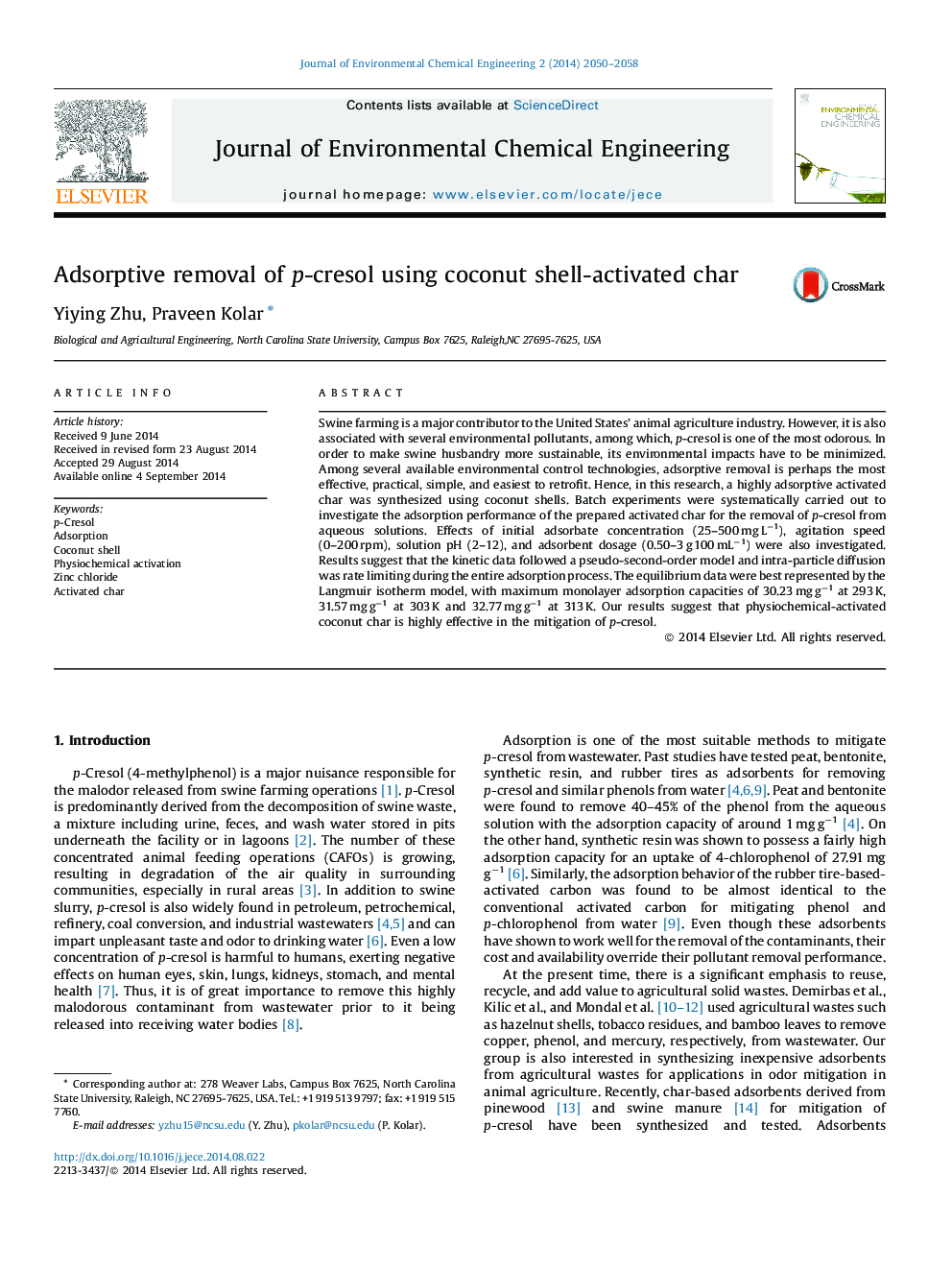| Article ID | Journal | Published Year | Pages | File Type |
|---|---|---|---|---|
| 221814 | Journal of Environmental Chemical Engineering | 2014 | 9 Pages |
Swine farming is a major contributor to the United States’ animal agriculture industry. However, it is also associated with several environmental pollutants, among which, p-cresol is one of the most odorous. In order to make swine husbandry more sustainable, its environmental impacts have to be minimized. Among several available environmental control technologies, adsorptive removal is perhaps the most effective, practical, simple, and easiest to retrofit. Hence, in this research, a highly adsorptive activated char was synthesized using coconut shells. Batch experiments were systematically carried out to investigate the adsorption performance of the prepared activated char for the removal of p-cresol from aqueous solutions. Effects of initial adsorbate concentration (25–500 mg L−1), agitation speed (0–200 rpm), solution pH (2–12), and adsorbent dosage (0.50–3 g 100 mL−1) were also investigated. Results suggest that the kinetic data followed a pseudo-second-order model and intra-particle diffusion was rate limiting during the entire adsorption process. The equilibrium data were best represented by the Langmuir isotherm model, with maximum monolayer adsorption capacities of 30.23 mg g−1 at 293 K, 31.57 mg g−1 at 303 K and 32.77 mg g−1 at 313 K. Our results suggest that physiochemical-activated coconut char is highly effective in the mitigation of p-cresol.
